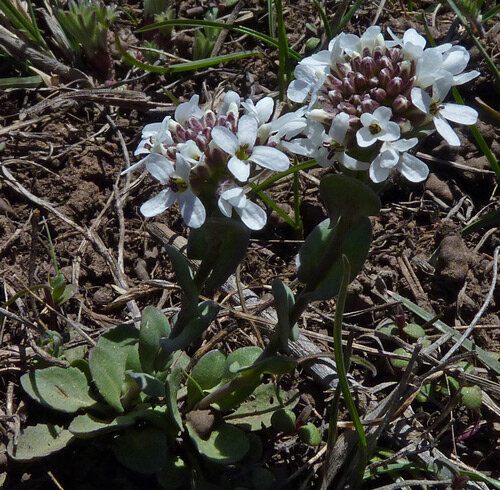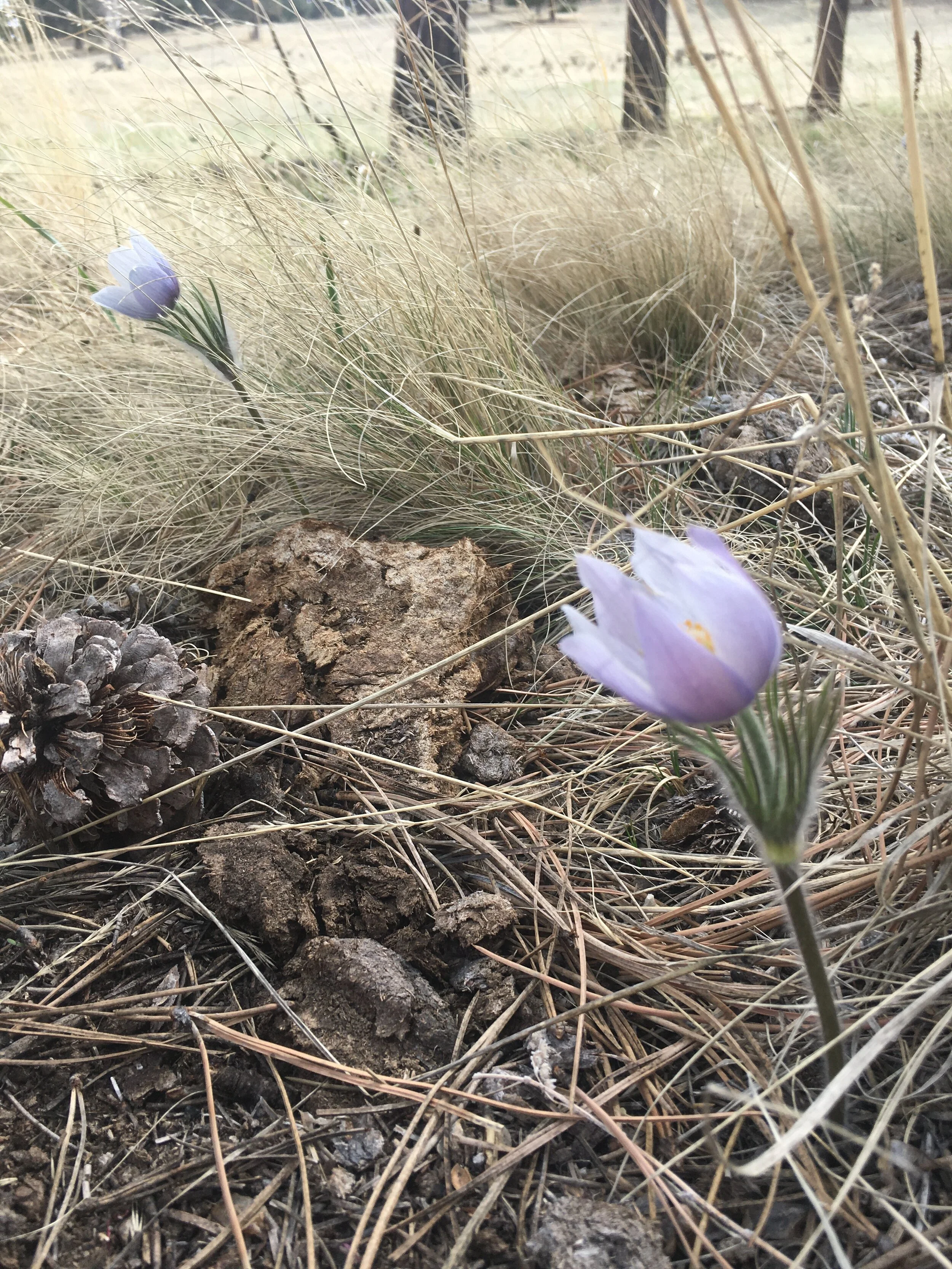Spring flowers scavenger hunt
In April, May, and June up at High Trails, we’re ushered out of our deep winter freeze by tiny, colorful buds peeking out from our gravelly soil. These early spring flowers, at first only noticeable underfoot by a keen eye, often grow taller and larger as the spring carries on. At first glance, our meadows up at High Trails look like unwavering fields of brown and green. Finding the delicate, purple-pink furry buds of the pasqueflower hidden amongst the dried grasses feels like a secret gift of spring. We love spotting these early harbingers of warmer weather to come.
Read each plants’ description and observe them in the wild to learn how these hardy flowers survive Colorado’s cold spring weather, weeks before other flowers can bloom.
WILD Candytuft
Noccaea montana
Mustard family
Delicate white 4-petaled flowers in cluster atop 10-inch stem, clasping leaves.
Candytuft is named for its place of origin, Candia, the ancient name of Crete. It blooms straight out of the gravel, for it grows best where it has no competition from other plants. Root growth in wild candytuft begins at temperatures below that which is conducive to cultivated species. Look for candytuft on your hikes this summer; you’ll see candytuft blooming in low canyons and foothills in spring, then in the high mountains later in summer.
Habitat: Shady sites, foothills to alpine.
Pasqueflower
Pulsatilla patens
Buttercup family
Pale lavender, 6-sepaled flowers with yellow centers on hairy, leafless stalks.
Pasqueflowers are cleverly designed to survive harsh conditions, with their furry leaves and ability to close up and hold warmth through the night. Pasqueflowers are perennials, which means they extend their root system each year. Because they remain living over the winter, they are ready to grow and leaf out at the first signs of warmth in spring. Even if a freeze nips the new growth, they can continue to produce leaves and survive because they already have a root system. Each year, pasqueflowers reappear in the same spot of ground. Note where you see pasqueflowers this spring, so you can check the same spot next year!
Habitat: Meadows, fields, open woods, sagebrush, and tundra.
SNOWBALL saxifrage
Micranthes rhomboidea
Flowers are in a single ball or cluster at the top of the stem that may be up to 12”. Leaves are thick and basal. They can also appear pink.
There are two possible origins for this plants name, “saxifrage,” — one comes from its translation to “rock-breaker,” which speaks to this flower’s love of rocky slopes. The other, as discussed by John Gerard’s Herbal History of Plants (1633), comes from its historic use to treat kidney stones.
Habitat: Meadows and rocky slopes, foothills to alpine.
Pussytoes
Antennaria corymbosa
Small pinkish-grey catpaws amongst mats of silvery leaves. Flowers bloom in early May and persist a month or more until they release feather seeds. These are hardy, adaptable plants that allow them to be one of the few plants of the ponderosa underlayer. Their low rosette form provides protection across spring cold, while at the same time achieving the greatest exposure to light by a minimum of overlapping.
Habitat: Dry locations in pine forests and open fields.
Posted 5/19/20, Sarah Adler
About Sarah Adler: Sarah is co-director at High Trails. She taught students for many years as a High Trails field instructor, before ultimately settling down in Florissant year-round. From her vantage point on the SE corner of property, Sarah gets to watch the succession of plants that emerge as the snow melts in spring.



